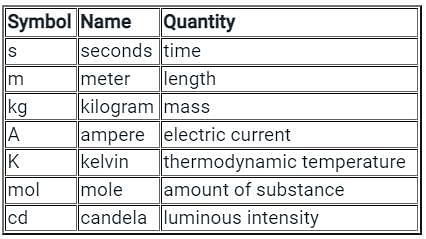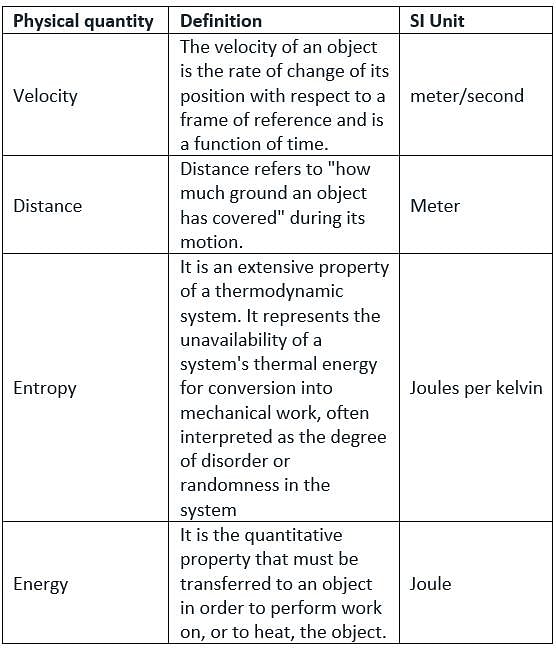Grade 12 Exam > Grade 12 Tests > Physics for Grade 12 > Test: Physical Quantities - Grade 12 MCQ
Test: Physical Quantities - Grade 12 MCQ
Test Description
10 Questions MCQ Test Physics for Grade 12 - Test: Physical Quantities
Test: Physical Quantities for Grade 12 2025 is part of Physics for Grade 12 preparation. The Test: Physical Quantities questions and answers have been
prepared according to the Grade 12 exam syllabus.The Test: Physical Quantities MCQs are made for Grade 12 2025 Exam. Find important
definitions, questions, notes, meanings, examples, exercises, MCQs and online tests for Test: Physical Quantities below.
Solutions of Test: Physical Quantities questions in English are available as part of our Physics for Grade 12 for Grade 12 & Test: Physical Quantities solutions in
Hindi for Physics for Grade 12 course. Download more important topics, notes, lectures and mock
test series for Grade 12 Exam by signing up for free. Attempt Test: Physical Quantities | 10 questions in 10 minutes | Mock test for Grade 12 preparation | Free important questions MCQ to study Physics for Grade 12 for Grade 12 Exam | Download free PDF with solutions
Detailed Solution for Test: Physical Quantities - Question 1
Test: Physical Quantities - Question 2
The escape velocity on the Earth's surface is about ______.
Detailed Solution for Test: Physical Quantities - Question 2
Detailed Solution for Test: Physical Quantities - Question 3
Test: Physical Quantities - Question 4
Which of the following is an example of vector quantity?
Detailed Solution for Test: Physical Quantities - Question 4
Test: Physical Quantities - Question 5
A ____________charge is defined as the amount of electric charge transported by one-ampere current in one second from one point to another.
Detailed Solution for Test: Physical Quantities - Question 5
Detailed Solution for Test: Physical Quantities - Question 6
Detailed Solution for Test: Physical Quantities - Question 7
Test: Physical Quantities - Question 8
With what do you divide thrust in a liquid to obtain the value of pressure?
Detailed Solution for Test: Physical Quantities - Question 8
Detailed Solution for Test: Physical Quantities - Question 9
Test: Physical Quantities - Question 10
Two resistors, each of 20 ohms, are connected in parallel and this combination is connected across a 40 V supply voltage.
Find the resistance in the circuit.
Detailed Solution for Test: Physical Quantities - Question 10
|
143 videos|360 docs|145 tests
|
Information about Test: Physical Quantities Page
In this test you can find the Exam questions for Test: Physical Quantities solved & explained in the simplest way possible.
Besides giving Questions and answers for Test: Physical Quantities , EduRev gives you an ample number of Online tests for practice




















